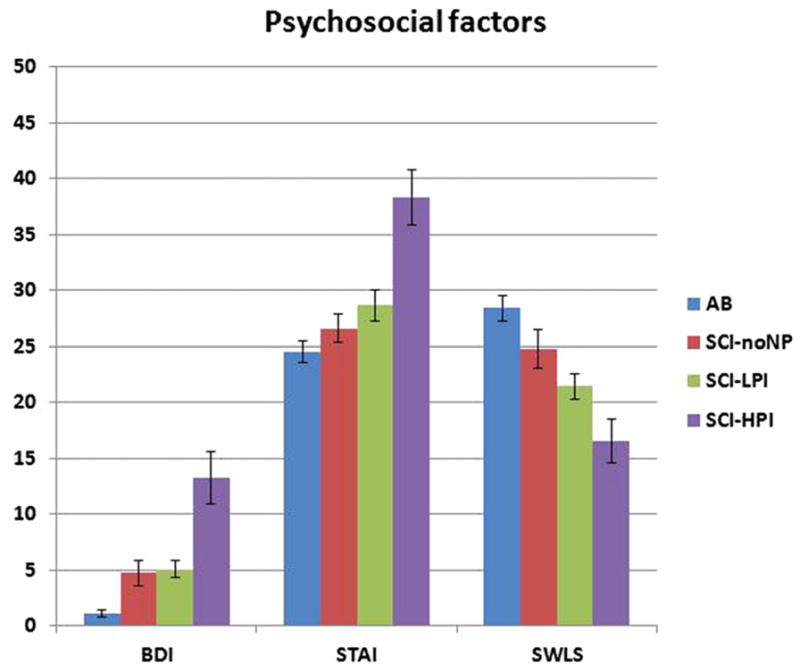Fig. 2.

Comparisons between the A-B, SCI-noNP, SCI-LPI, and SCI-HPI groups with regard to psychosocial factors: BDI, STAI, and SWLS. Analysis of variance with post hoc Dunnett adjustment comparing the SCI-HPI with the A-B, SCI-noNP, and SCI-LPI showed that the SCI-HPI group had significantly higher BDI and STAI scores than the A-B (P < .000), SCI-noNP (P < .000), and SCI-LPI (P < .000); and that the SCI-HPI group had significantly lower SWLS scores than the A-B (P = .001), SCI-noNP (P = .001), and SCI-LPI (P = .044). A-B = able-bodied control subject; BDI = Beck Depression Inventory; SCI-HPI = spinal cord injury with high pain impact; SCI-LPI = spinal cord injury with low pain impact; SCI-noNP = spinal cord injury without neuropathic pain; STAI = Spielberger Trait Anxiety Inventory; SWLS = Satisfaction with Life Scale.
